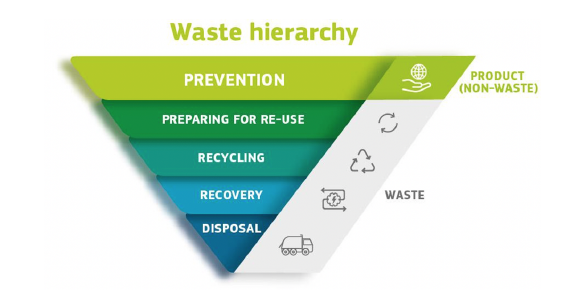SMART recently issued a Joint Statement with TRA, EuRIC and BIR Textiles Division to Help the Public Understand the Used Clothing Industry in Africa
Discover the Truths about the Used Clothing Industry
THE NEWS:
A variety of associations involved in the used clothing trade around the
world have joined forces to dispel myths about the industry. The truth is
that the used clothing industry is gaining momentum with tremendous
environmental, social, and economic benefits. The industry is working
towards a circular economy by offering sustainable solutions for used
textiles that will benefit everyone and help to reduce the major
environmental impacts caused by the global fashion industry.
THE FACTS:
It is crucial to understand the used clothing supply chain to fully understand
what happens to used textiles. There is a common misconception that
secondhand clothing exported to developing countries partially ends up
being discarded right away. The fact is clothing not sold directly in the
market simply gets passed down the supply chain and ends up selling in
other smaller markets throughout the region. If you follow simple rationale,
it is easy to understand that no profitable business will spend money on
packing, shipping, and distributing a product only to have it end up in a
landfill. The used clothing industry is growing right now in response to the
increasing demand for affordable products and environmentally conscious
consumers. In many cases, the used garments are also higher quality and
last longer than cheaper new products. This downstream effort is a win-win
situation for people looking for a place to re-use their clothing and for
consumers searching for good value.
In the United States, Jackie King, Executive Director of Secondary
Materials and Recycled Textiles Assoc. (SMART), explained, “Textile reuse
and recycling is the solution, not the problem. Secondhand clothing
exported to countries is sorted and graded for customer needs or
preferences. Suppliers do not ship waste; it is not cost-effective. Customers
demand quality clothing for resale, not waste; the semantics of ‘waste’
really means what they couldn’t sell. The reality is if clothing doesn’t sell, it
is often shipped to other worldwide markets for resale or recycling – not
thrown away.”
Similar sentiments are heard from Martin Böschen, President of the Textile
Division of the Bureau of International Recycling (BIR). Böschen
elaborates, “Due to high transport and import costs, it doesn’t make sense
for importers to import secondhand textiles which are not suitable for the
local market. Discarding or recycling those textiles in the U.S. or Europe
would be cheaper than sending them to Africa. Therefore, the hypothesis
that a large fraction of the imported textiles goes directly to landfill is highly
questionable.”
In the European Commission, as part of the waste framework directive, a
specific hierarchy is defined. It places ‘preparing for re-use’ above
recycling. In other words, the EU already recognizes the importance of
textile re-use from a global perspective. In fact, all EU member states are
required to have installed a separate collection for used textile by 2025.

THE PROOF:
On March 5th, 2021, the Institute of Economic Affairs in Kenya released an
extensive study on the used clothing industry and its contributions to the
Kenyan economy. Kenya is an excellent example of the impact
secondhand clothes can have on the economy. Kenya is one of the largest
importers of used clothing in Africa.
Key Research Findings:
- The used clothing textile industry is crucial to Kenya’s economy
as two million people are directly employed. In addition, thousands
of other jobs are created and supported in ancillary sectors, like the transportation industry. - Based on the Kenya National Bureau of Statistics (KNBS) Manpower Survey,
mitumba traders fall under the secondhand clothes and footwear industry and make up
an estimated 10% of the extended labor force, or two million people.
Therefore, the secondhand clothing industry improves standards of living for two
million people and reduces poverty levels. The impact is significant since the
Wellbeing Report of 2018 (Kenya National Bureau of Statistics) states that 36% of
the Kenyan population lives below poverty. Source
The used clothing industry is simply the supplier responding to the
demands of Kenyan consumers. Consumers are seeking good value
clothing on limited budgets. The report states, “The typical income earner in
Kenya spends about 40% of monthly earnings to procure food alone. The
rest of the available income is spent on shelter, transportation, education,
health, and other needs”. Therefore, 91.5% of households in Kenya buy
secondhand clothes.
- It is a significant source of government revenues. Kenya imported
185,000 metric tons of secondhand clothing in 2019 equivalent to an
approximate 8,000 containers. As a result: businesses also pay
license fees to national and local governments, which translates into
millions of dollars to support the economy. - In Kenya’s used clothing sector, many businesses are operated by
women, which helps promote gender equality. - The environmental benefits of the used clothing trade are clear: For
every 100 used garments purchased, it means 60-85 new garments
are displaced. In turn, that means there is a significant reduction in
greenhouse gas emissions and the use of toxins which would have
been caused by the production of new textiles.
The extreme benefits of the used clothing industry which are impacting
Kenya can have the same effect globally. The Chief Executive Officer at
the United Kingdom’s Textile Recycling Association, Alan Wheeler,
explains it best: “The used clothing industry will continue to underpin the
viability of circular business models for decades to come and supplying
used clothing to markets & people wherever they are in the world will be
fundamental to achieving the maximum environmental benefits as well as
social and economic benefits.”
MOVING FORWARD:
As a collective group of used clothing and textile associations from various
countries, we want to set the record straight and strongly encourage the
world to consume used clothing and textiles. The used clothing industry
has a far-reaching and positive social, economic, and environmental
impact. Even the fashion industry is slowly joining the recycled trend’s
movement. Other countries should also follow the trends now being set in
African countries where ‘re-use’ is more the norm. We should be advancing
towards the same dream: for a circular economy which is essential from a
global perspective.
We issue one final challenge, please ‘share’ this factually correct
information and let it circulate on the web. We hope it will correct any
erroneous information about the worldwide benefits of second-hand
clothing, from where it is collected to where it is reused.
Signed,
The Secondary Materials and Recycled Textiles Association (SMART),
The European Recycling Industries’ Confederation (EuRIC) – Textiles
Textile Recycling Association (TRA)
Bureau of International Recycling (BIR) – Textile Division
CONTACTS: (available for interviews)
United States
Jackie King,
Executive Director
Secondary Materials and Recycled Textiles Assoc. (SMART)
Tel: 1.443.640.1050 X105 / c. 1.410.920.6681
jk***@*****mc.com
United Kingdom
Alan Wheeler
CEO
Textile Recycling Association
Tel: 0345 459 8276
in**@*******************rg.uk
European Union
Mariska Boer
President of the Textile division at European Recycling Industries’
Confederation (EuRIC Textiles)
Tel.: +31 611 60 45 40
ma*****@*******up.eu
International/Worldwide
Martin Böschen
President of the Textile division at Bureau of International Recycling (BIR)
Tel.: +41 76 363 54 44
m.********@****id.ch
List of clothing and textiles that can be recycled:
https://www.smartasn.org/SMARTASN/assets/File/resources/List_of_recyclable_textiles.pdf
